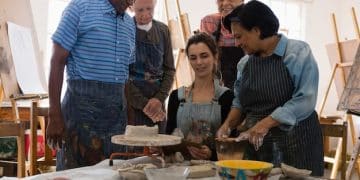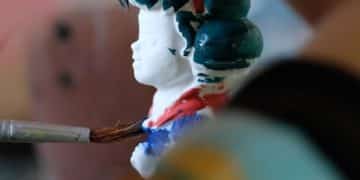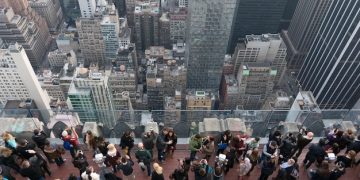The Future of Art Museums: Adapting to the Digital World
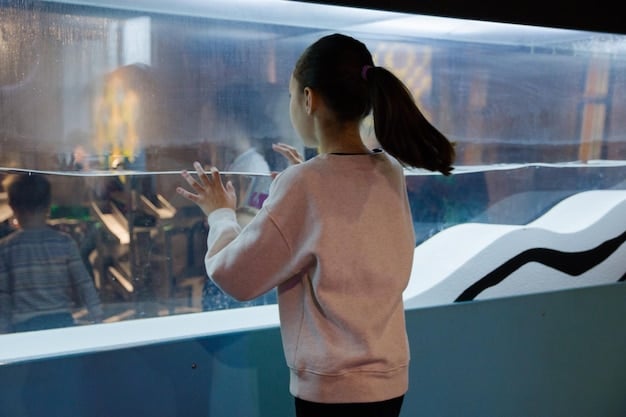
The future of art museums involves a dynamic adaptation to the digital world, incorporating virtual experiences, enhanced accessibility, and innovative technologies to engage new audiences and preserve cultural heritage.
The art museum is no longer confined to its physical walls. The future of art museums: adapting to a digital world, involves leveraging technology to enhance the visitor experience, broaden access, and forge new connections with audiences worldwide.
Reimagining the Museum Experience
Art museums are at a pivotal moment, facing the challenge of remaining relevant in an increasingly digital age. This requires a fundamental shift in how they operate and engage with their audiences.
To thrive in the future, art museums must embrace innovation and adapt to the changing expectations of visitors who are accustomed to personalized and interactive experiences.
Digital Storytelling
Digital storytelling offers powerful ways to enhance the museum visit, making art more accessible and engaging.
By using multimedia tools, curators can create immersive narratives that bring artwork to life and provide deeper insights into the creative process.
- Augmented reality (AR) overlays provide virtual information about artworks when visitors point their smartphones at them.
- Interactive touchscreens allow visitors to explore historical context and related content at their own pace.
- Virtual tours provide access to exhibitions for those who cannot physically visit the museum.
Museums are using virtual reality (VR) to reconstruct historical settings and create interactive experiences. This technology allows visitors to step back in time and witness historical moments, adding immense educational value.
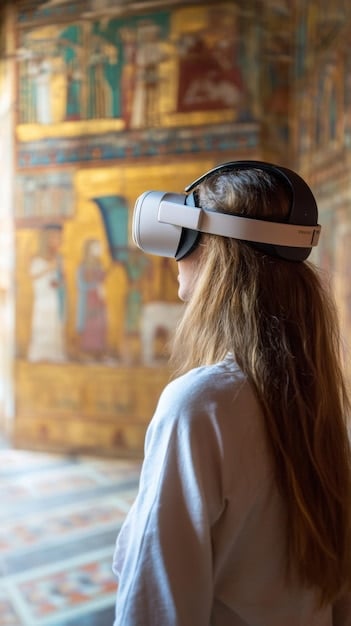
Expanding Access Through Digital Platforms
The digital realm provides unprecedented opportunities for art museums to reach wider audiences and democratize access to art. Museums can use online platforms to provide high-quality content, engage with communities, and foster a global appreciation for art.
By creating a strong online presence, museums can build a dialogue with people all over the world, enabling art lovers to connect with art any time, any place.
Online Exhibitions
Online exhibitions eliminate geographical barriers, making art accessible to anyone with an internet connection.
These exhibitions can feature high-resolution images, videos, and audio commentary, providing a rich and immersive experience for online visitors.
- Interactive 3D models of sculptures and architectural structures allow viewers to explore artworks from every angle.
- Virtual tours of exhibitions offer a walkthrough experience similar to visiting the physical museum.
- Digital archives provide access to a vast collection of documents, photographs, and historical materials.
Digital collections also enable scholars and researchers to study artworks in detail. They also facilitate global cooperation among institutions, fostering the sharing of knowledge and resources.
The Role of AI and Machine Learning
Artificial intelligence (AI) and machine learning (ML) are revolutionizing the way art is created, analyzed, and experienced. They also offer art museums new ways to manage collections, understand visitor behavior, and personalize the museum experience.
AI and ML algorithms can analyze vast amounts of data to identify patterns, provide personalized recommendations, and enhance the overall visitor experience.

Personalized Recommendations
AI algorithms can analyze visitor data to provide personalized recommendations. These recommendations can be based on past visits, preferences, and demographic information.
By tailoring the museum visit to suit individual interests, AI can enhance engagement and satisfaction.
- AI-powered apps can recommend artworks and exhibitions based on the visitor’s art preferences.
- Smart museum guides provide personalized tours, highlighting artworks that align with the visitor’s profile.
- Interactive maps guide visitors through the museum, suggesting the most efficient route based on their interests.
AI can also assist with art authentication, using advanced image recognition techniques to verify the authenticity of artworks.
Community Engagement and Education
The future of art museums extends beyond the exhibition halls. Museums are increasingly engaging with their local communities and providing educational programs that promote art appreciation and cultural understanding.
By fostering community engagement, museums can build lasting relationships with local organizations, schools, and cultural groups.
Educational Programs
Educational programs are a cornerstone of the modern art museum. These programs cater to all ages and skill levels, providing opportunities for creative expression and learning.
By offering a variety of educational programs, museums can nurture a love of art and foster the development of future artists and art enthusiasts.
- Workshops and classes teach traditional art techniques such as painting, drawing, and sculpture.
- Lectures and seminars explore art history, theory, and current trends in the art world.
- Interactive programs use digital media to engage young audiences, making art more accessible and fun.
Museums are also developing partnerships with schools and universities, offering specialized programs that complement the curriculum and provide students with hands-on experiences. These initiatives help to plant seeds for a lifetime appreciation of art.
Sustainability and Accessibility
Sustainability is becoming an increasingly important consideration for art museums. Museums are taking steps to reduce environmental impact and promote sustainable practices.
Accessibility is another key priority. Museums are working to create inclusive environments that cater to visitors of all abilities and backgrounds.
Green Initiatives
Green initiatives can help museums reduce their carbon footprint and minimize environmental impact.
By adopting sustainable practices, museums can set an example for other organizations and inspire visitors to adopt environmentally responsible behaviors.
- Energy efficiency and renewable energy: Museums are investing in energy-efficient lighting, HVAC systems, and renewable energy sources such as solar power.
- Waste reduction and recycling: Museums are implementing comprehensive waste reduction and recycling programs, diverting waste from landfills and promoting the reuse of materials.
- Sustainable building materials: Museums are using sustainable building materials and construction techniques when renovating or expanding their facilities.
Museums are also committed to creating inclusive environments that cater to visitors of all abilities and backgrounds. They are improving accessibility for persons with disabilities such as providing ramps, elevators, and assistive technologies.
Challenges and Opportunities
The transition to a digital museum requires overcoming several challenges. Museums need to invest in technology infrastructure, train staff, and protect digital assets from cyber threats. However, addressing these challenges will unlock tremendous opportunities.
By embracing innovation, museums can create transformative experiences that inspire, educate, and connect people through art.
Funding and Resources
Securing adequate funding and resources is an ongoing challenge for most museums.
Government grants, private donations, corporate sponsorships, and earned revenue are all important sources of funding.
- Museums are also exploring new funding models such as crowdfunding and membership programs.
- Building strong relationships with donors and sponsors is essential for securing long-term financial stability.
- Collaborating with other museums and cultural institutions can help to share resources and lower costs.
Ultimately, the future of art museums: adapting to a digital world, depends on the ability to leverage technological advancements, engage new and diverse audiences, and embrace sustainable practices. By addressing challenges creatively and capitalizing on opportunities thoughtfully, museums can ensure their continued relevance as vital hubs of culture, education, and inspiration.
| Key Point | Brief Description |
|---|---|
| 📱 Digital Accessibility | Enhanced reach through online platforms and virtual exhibitions. |
| 🤖 AI Integration | Personalized visitor experiences and art authentication. |
| 🌍 Sustainability | Eco-friendly practices and responsible resource management. |
| 📚 Educational Programs | Community engagement and fostering art appreciation. |
Frequently Asked Questions
▼
Museums are utilizing VR to reconstruct historical settings. This allows visitors to step back in time and witness historical moments, providing immense educational value and a deeper understanding of art.
▼
AI assists with art authentication by using advanced image recognition techniques to verify the authenticity of artworks. This can offer a level of scrutiny that can assist both museums and collectors alike.
▼
Online exhibitions eliminate geographical barriers, making art accessible to anyone with an internet connection. They often feature high-resolution images and interactive components, ensuring richer engagement.
▼
Green initiatives in museums include energy efficiency measures, waste reduction programs, and the use of sustainable building materials. Museums are actively reducing environmental impact for a greener future.
▼
Museums can improve community engagement by developing partnerships with local schools, offering hands-on workshops, and hosting community-driven events, which foster lasting relationships and interest.
Conclusion
The journey towards a digitized and inclusive art museum represents an exciting transformation. By embracing new technologies, prioritizing accessibility, and focusing on community engagement, art museums can thrive in the digital world, ensuring that art remains an integral part of society for years to come.
